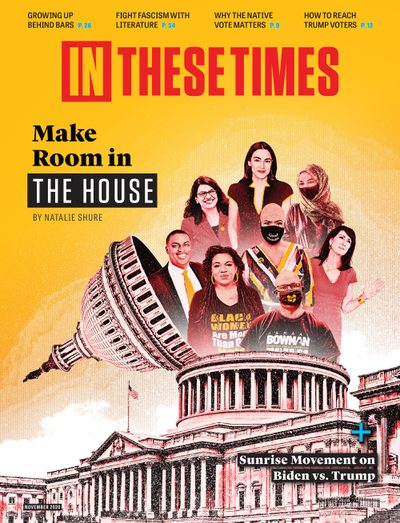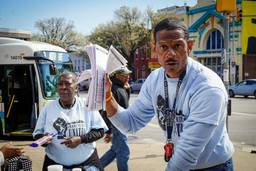The Supreme Court Said Their Sentencing Was Unconstitutional. But They’re Still Behind Bars.
Despite SCOTUS rulings against life without parole sentences for juveniles, most who received that sentence remain incarcerated.
Katie Rose Quandt

Efrén Paredes Jr.’s life outside prison was over before he was old enough for a driver’s license.
With no criminal record, 15-year-old Paredes worked part-time as a bagger at a Michigan grocery store. One night, after hours, his co-worker was shot and killed during a robbery. Paredes, who maintains his innocence, was charged as an adult and convicted in a widely publicized 1989 trial, in which the rap lyrics he copied into a high school notebook were used against him as evidence of premeditation. The judge gave Paredes the mandatory sentence for first-degree murder in Michigan: life without parole.
More than two decades later, the U.S. Supreme Court began a series of decisions that would all but deem that sentence unconstitutional for minors. But of the more than 2,800 people sentenced to life without parole as juveniles in the United States, approximately 2,150 remain in prison, including Paredes.
The Court decided, in 2010, that “juvenile life without parole” (JLWOP) is an unconstitutional sentence for crimes other than homicide. In 2012, in Miller v. Alabama, the Court prohibited JLWOP as a mandatory minimum sentence for any crime but did not ban it outright. Finally, in 2016, Montgomery v. Louisiana made the Miller decision retroactive, ruling that people like Paredes “must be given the opportunity to show their crime did not reflect irreparable corruption; and, if it did not, their hope for some years of life outside prison walls must be restored.”
“I was cautiously optimistic,” Paredes recalls. For years, Paredes advocated from behind bars against long sentences for children. “I knew that it was a good opinion. I was happy that they made it retroactive. What I was not happy with was how they still left so much room for misinterpretation.”
Paredes was right to be concerned. The Montgomery decision was unclear on how individual states should implement the ruling. Some states automatically granted parole eligibility to anyone with a JLWOP sentence (after a certain number of years served), while others arranged individual resentencing hearings. And some states withheld resentencing opportunities in cases in which JLWOP was not given as a mandatory minimum.
Today, about 700 people are still waiting for the resentencing opportunity they were promised in 2016. Another 1,450 have been given reduced sentences but remain incarcerated; some have become parole-eligible but have been denied parole. Others’ new sentences are so long, they will not be parole-eligible for decades. And so far, about 85 have had their life-without-parole sentences reaffirmed.
Especially now, as Covid-19 is spreading rapidly in prisons, such differences can mean life or death.
“It can feel like justice by geography,” Marsha Levick, chief legal officer of Juvenile Law Center (JLC), tells In These Times.
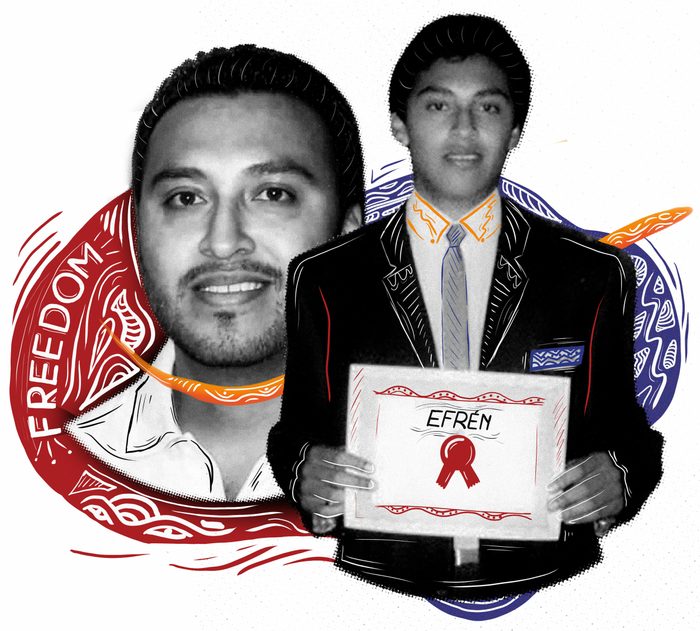

A Long Wait for Resentencing
Even before the Supreme Court decisions, JLWOP sentences were poorly tracked, heavily concentrated in particular regions and split along racial lines.
“JLWOP reflects deep racial disparities in our criminal justice system and has been imposed disproportionately on youth of color, particularly Black children,” says Rebecca Turner, litigation counsel at the Campaign for the Fair Sentencing of Youth (CFSY).
A 2015 analysis by the Phillips Black Project found that Black children were twice as likely as white children to be sentenced to JLWOP for the same crime. By 2016, people of color made up 38% of the U.S. population and 77% of those serving JLWOP sentences. People of color had 80% of JLWOP sentences in Pennsylvania, 73% in Michigan and 81% in Louisiana, the three leading JLWOP states.
Prior to the Montgomery ruling, Pennsylvania, Michigan and Louisiana accounted for more than two-thirds of the nation’s JLWOP sentences. These states, combined with California, Florida, Missouri, Illinois, North Carolina and Mississippi, were responsible for about 81%. Variation exists even at the county level, where some district attorneys make a habit of bringing more severe charges and seeking harsher sentences.
After being sentenced to life without parole at 16, Paredes was booked into the Michigan Reformatory, an adult facility. He says several older men took him under their wings and helped him navigate prison life. Paredes says he found solace in “educating myself, and immersing myself in books, and learning and growing, and just doing everything I can to maintain my sanity, and learning to become a better version of myself all the time.”
In prison, Paredes earned his GED and began taking college courses. He has transcribed textbooks into Braille, worked as a teacher’s aide, written advocacy blog posts, and pored over academic criminal justice articles in the law library. Unlike many people serving JLWOP, who have grown into middle age without ever having the chance to form romantic relationships, Paredes found love while incarcerated and is married with a young daughter.
After the Montgomery decision in 2016, Michigan’s legislature required district attorneys to review every JLWOP sentence that had been given as a mandatory minimum. For each, they could recommend reaffirming the sentence or reducing the sentence within certain parameters. Given this choice, prosecutors across the state initially recommended life without parole for two-thirds of their 354 cases (though some of these recommendations have since been shortened). Those recommended for life without parole were put at the back of the line for resentencing.
In Berrien County, Mich., prosecuting attorney Michael Sepic — the same attorney who prosecuted Paredes’ original case — recommended reaffirming the sentences in eight of 12 JLWOP cases, including for Paredes.
Sepic told In These Times in July that his office made sentencing recommendations after considering the individual’s role in the crime, background and prison record. “I took four [people] off the table, but the other eight, I felt as a prosecutor, that they should serve that time in prison, life without parole,” he says. He argues JLWOP will still be rare, as required by the Supreme Court — when compared against the total number of juveniles in the county.
As of August, more than four years after Montgomery, 166 people were still waiting for resentencing hearings in Michigan.
The consequences of resentencing delays can be heartbreaking, made even more urgent in the time of the coronavirus. William Garrison, for example, served 44 years of a life sentence he received at 16 in Wayne County, Mich. Garrison received a reduced sentence in January and planned to move in with his sister in May. In April, 24 days before his expected release, he died of Covid-19.
In Louisiana, a 2017 law made anyone who was sentenced to mandatory JLWOP eligible for a parole hearing after serving 25 years — unless the district attorney wanted to reaffirm the sentence, which would result in a resentencing hearing. District attorneys sought life without parole in about a third of 300 cases. As of June, around 80 people were still awaiting hearings. Similarly, in North Carolina, 43 of 94 people serving JLWOP sentences are still awaiting hearings.
In total, around 700 people throughout the United States have yet to be resentenced.
Paredes’ hearing is scheduled for October. Despite the prosecuting attorney seeking to reaffirm his sentence, Paredes is hopeful. “It feels good to know that things are finally moving along after an 8.5-year, grueling waiting process,” he writes to In These Times . “My team will be able to present a compelling case of why I am deserving of a term-of-year sentence, and the opportunity to reunite with my family and become a full-time father to my schoolage daughter.”
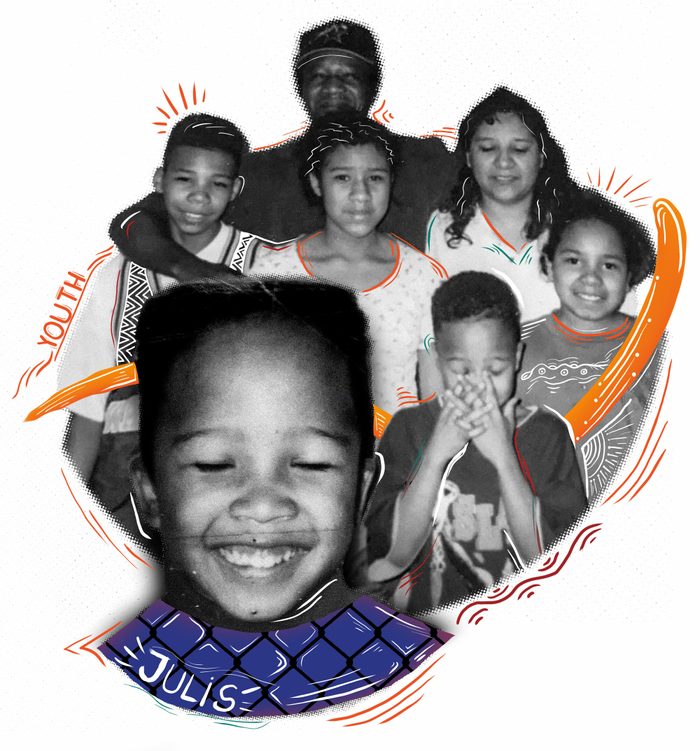

A New, Lengthy Sentence
Julis Perales, then 17, helped rob a Texas convenience store in 2005. One of his accomplices shot and killed the store clerk. Perales declined a plea deal of 25 to life and was tried for first-degree murder, even though he did not pull the trigger. He was convicted and received a mandatory minimum sentence of life without parole.
When Perales heard about the Miller ruling, which he calls a “phenomenal moment for the nation at large and for me and my loved ones,” he took to the law library. In 2013, he appealed his sentence as unconstitutional, hoping he would be granted a hearing before a jury that would consider his childhood, the influence of his peers and his role in the crime.
“I couldn’t accept the fate of dying in prison for a mistake of choosing to commit a robbery, where it wasn’t my intention that anybody be hurt, much [less] killed,” Perales writes to In These Times.
The Texas Court of Criminal Appeals agreed that Perales’ sentence is unconstitutional. But instead of individualized resentencing, the Texas legislature simply converted the state’s 27 JLWOP sentences, including Perales’, to 40 years to life. Perales’ new sentence makes him eligible for parole at 57. He considers his sentence essentially unchanged.
“I was completely devastated,” Perales says. “I was even more crushed with this new sentence than with the first. Considering that a light of hope was shining, that since I’ve been in prison I’ve been doing all the things necessary to get myself together and learning what was necessary to attain the relief I feel I deserve. Putting forth my best efforts along all lines and being slammed like that again, I felt like a complete failure. … I felt completely powerless and hopeless.”
People around the country have challenged lengthy new sentences, including renewed life without parole, claiming they violate the spirit of Miller and Montgomery.
Perales says he has not given up his fight. He supports Texas’ Second Look bill — which has died in the legislature three times — which would make anyone incarcerated as a child eligible for parole after 20 years.
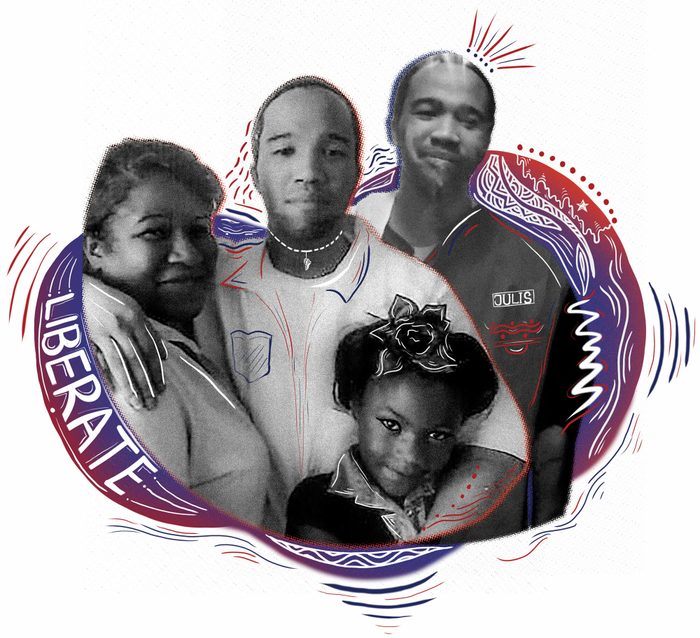

Waiting for Parole
In 1989, the same year Efrén Paredes was sentenced to life, Tino Wedlow says he was paid $75 by another kid in Kansas City, Mo., to watch for cops while a third person beat someone up.
“My only role was to be a lookout,” says Wedlow, who was 17.
Wedlow says he had no idea the third person was going to throw a gasoline bomb through the window of a house, which killed six people, including children. The police, meanwhile, said Wedlow was involved in setting the fire. Fearing the death penalty, he took a plea deal: life without parole.
“I had never been in trouble a day in my life,” Wedlow says. “I don’t have [a] juvenile record, none of that. I just made one poor decision when I was a kid.”
Missouri is one of several states — including California, West Virginia, Nevada, Virginia, Arkansas and Connecticut — whose legislature granted retroactive parole eligibility, after a certain number of years behind bars, for people sentenced as children.
But eligibility hasn’t always meant freedom. The process varies by state, but parole boards, often appointed by the governor, are generally supposed to consider whether a person is rehabilitated. As the ACLU found in a 2016 report, however, parole boards instead generally rehash the details of the original case.
In Missouri, where all 100-some JLWOP sentences were converted to 25 to life, the parole board remains a roadblock. Wedlow had a parole hearing in February 2017, a 10-minute video call.
“It wasn’t nothing about my maturity, how I was raised and brought up,” Wedlow says. “It was all about case questions and my prison conduct. I was able to make it to the honor dorm. I haven’t had a major violation since the early ’90s. And that’s the only thing they kept bringing up, was some violations from when I was 21 years old. In 2017, I’m in front of you, you’re bringing up stuff that happened in ’93. I’m almost 50.”
Two weeks later, Wedlow received a form denial letter with the promise of a second parole hearing in five more years. The Missouri parole board approved just three of the first 23 JLWOP lifers who appeared.
In response, four Missouri men filed a class action against the Missouri Parole Board, arguing their rights under Montgomery were being denied. In 2018, a U.S. district judge ruled in their favor, ordering new parole hearings for Missouri’s JLWOP cases — and ordering the board to consider factors beyond the original crimes. Parole hearings began moving forward under this new direction in July (though the board is appealing the district court’s decision). As of August, the board had not yet released its new decisions.
“It’s very inconsistent in terms of parole availability,” Marsha Levick says. In Wisconsin and Maryland, for example, class actions have been brought by people who argue their states’ low release rates effectively turn their parole-eligible life sentences into JLWOP cases. In Louisiana, where dozens of juvenile lifers have been paroled, 74-year-old Henry Montgomery, the man who brought the Montgomery case, has been denied twice and remains behind bars. Specifics also vary regarding when parole eligibility even starts.
Wedlow’s new parole hearing is scheduled for March 2021. He hopes to discuss the challenges he has overcome and demonstrate the person he is today. “It takes more than 10 minutes to go over everything that the Miller case said to do,” Wedlow says. “They didn’t ask anything about the person, how you was brought up and raised, if you was neglected and physically abused as a child, which I was.”
Even if Wedlow is granted parole, his earliest release would likely be in 2022, at age 50. He then hopes to find a job, reconnect with family members and pursue a relationship.
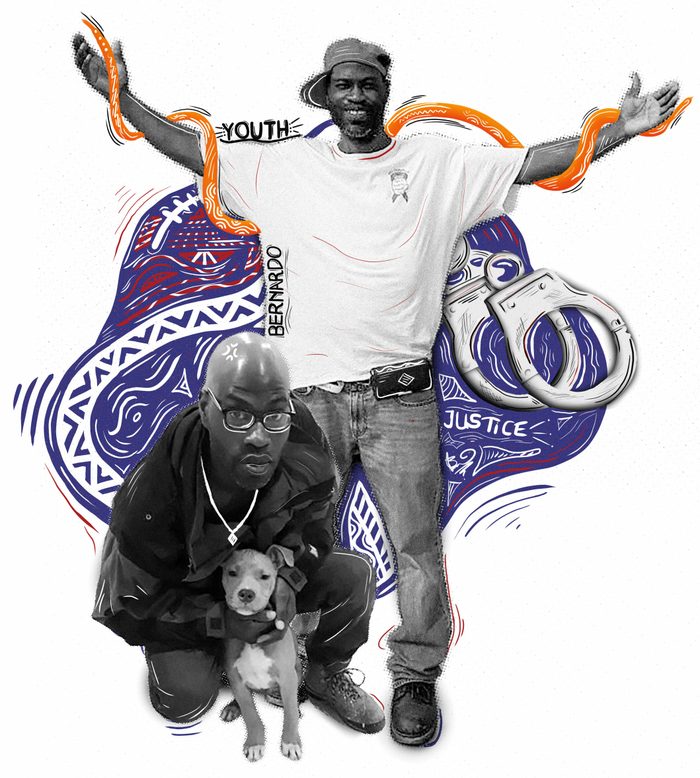

Bittersweet Freedom
In 1994, Bernardo Burnside received a mandatory sentence of life without parole in Philadelphia, for homicide, at age 16. Formerly the nation’s leader in JLWOP sentencing, Pennsylvania has become a leader in resentencing — particularly in Philadelphia County.
By August, Pennsylvania had held individual resentencing hearings for 460 of 521 people serving JLWOP sentences, according to Department of Corrections data. Pennsylvania’s parole board approved 70% of those eligible: 241 people.
Recidivism among those released after JLWOP sentences is rare. Of the 174 people released in Philadelphia by the end of 2019, only two had been convicted of any new offenses. In Michigan, where 119 people have been released, none have violated parole or recidivated.
After Burnside’s 2018 resentencing hearing, for which he was assigned an attorney and mitigation expert, a judge reduced his sentence to 25 to life — making him parole-eligible based on time already served. Within four months, he became one of nearly 650 people around the country released after being sentenced to JLWOP.
Burnside went home July 17, 2018, on the eighth anniversary of his mother’s death. “That same day that I came out, it started raining,” he says. “And the only thing I could do was just stand there and look at the sky. People were like, ‘That’s your mom, crying. She’s happy for you.’ It was a blessing.”
At first, things went well. Burnside found a job making more than $800 a month as a janitor at an apartment complex. With an income, he qualified for a housing assistance program. He took over his own lease after six months.
“I was able to take care of my rent, pay my cell phone bill and still have money saved aside,” Burnside says. But when new management learned about his past, they fired him. He says he was hired and almost immediately let go from two other jobs, at a bakery and as a home health aide. While Philadelphia’s “ban the box” law prevents employers from asking about criminal records on job applications, they can do background checks later.
“The Department of Corrections told us when we came home that our backgrounds wouldn’t be held against us,” Burnside says, but he believes he would not have been fired if not for his background. “I thought I was going to be able to come out here and get a nice job and start living — I don’t want to say a normal life, but a peaceful life. But it hasn’t been that.”
Burnside found temp work, but the hours were spotty and all but disappeared during the pandemic. He constantly applies for jobs, but an injury has made finding work even harder. He is months behind on rent and his pandemic stimulus check did not cover his bills. “I have nowhere to go,” he says. “If I lose my apartment — excuse my language, but I’m shit out of luck.”
“Having a first- or second-degree homicide conviction on your record presents a huge barrier to accessing meaningful long-term employment,” says Joanna Visser Adjoian, co-director of the Youth Sentencing & Reentry Project (YSRP). YSRP helps a subset of Philadelphia’s juvenile lifers navigate the resentencing process and helps former lifers build community and find resources and jobs.
“Why are people being successful and … not going back [to prison]?” asks YSRP Reentry Coordinator John Pace, who was resentenced from JLWOP and released in 2017. “It’s about the resiliency of the individual, being appreciative of the opportunity and taking advantage of it.”
Similarly, the Louisiana Parole Project helps people who have long juvenile sentences prepare for parole hearings and provides support after release. Paroled clients receive temporary housing, mentorship, help accessing insurance and benefits, and case management. Clients take classes to catch up on everything from personal finance to how cell phones and email work to new social norms after decades of change.
“One of our attorneys called it Rip Van Winkle syndrome,’” says Deputy Director Kerry Myers, who himself spent decades in prison.
Myers says none of the Parole Project’s 137 released clients have been rearrested. “Many of our clients are now employed, married, have families,” he says. “A couple of them are becoming homeowners.” The organization also helps clients find work and apply for subsidized housing.
“We want this program to show what we all know the data says — that they’re generally low-risk and just have high needs,” Myers says. “It’s not a public safety issue or threat to release them, as long as they have the right resources when they come out.”
“I take full responsibility for what I did,” says Burnside. “I wasn’t thinking. I just wanted to fit in.” Now, he says, “I’m not the same person. I think for myself. I stand on my own two feet. And I’m proud to say, you know, I’m doing what a man is supposed to do. I’m out here, taking responsibility.”
Despite the challenges, Burnside is grateful. “One of the best things is sleeping in a soft bed,” he says. “Taking a bath — not a shower all the time. Picking my own food, eating when I want to eat, being able to just walk out my front door… I don’t take much for granted being out here. … I have a dog, a little pit bull. Being home and just sitting in bed, I’m content. He can’t talk back to me but he listens. I’m just grateful for the little things.
“It’s been a blessing,” he adds. “But it’s also been a letdown.”

The Next Step
Despite evidence that juvenile offenders are unlikely to reoffend, some states continue to give children JLWOP sentences. In Louisiana, 57% of children sentenced for murder since the Miller decision have been sentenced to life without parole, according to the Louisiana Center for Children’s Rights. Even the 23 states that have abolished JLWOP continue to give children lengthy sentences: Around the country, some 7,300 people are serving life (with parole) for crimes committed as children.
“We’re a very retributive culture,” Levick says. “We think of our criminal justice system as having, for the most part, no other purpose than punishment and retribution. Rehabilitation almost never comes up. … The fundamental question is, what does justice mean? And we need to change how we answer that question.”
JLC and CFSY support a ban on sentencing children to life in prison without parole.
“As an organization, we believe that children are fundamentally different from adults, they have an innate capacity for positive growth and change, and they should never be sentenced to die in prison,” says Rebecca Turner, of CFSY.
Meanwhile, the U.S. Supreme Court has not finished weighing in. In addition to challenges over lengthy sentences for children, another key question is whether Montgomery applies to “discretionary” JLWOP sentences, the life sentences that were not mandatory minimums. Advocates interpret the decisions to mean all JLWOP sentences are unconstitutional, unless a court specifically finds an individual “incorrigible.”
In March, the Supreme Court took a case that will add some clarity. Brett Jones was sentenced to JLWOP for killing his grandfather in Mississippi in 2004, when Jones was 15. After Miller, Jones had a hearing that reaffirmed his sentence. Jones v. Mississippi specifically asks the Court whether a sentencing authority is required to “make a finding that a juvenile is permanently incorrigible before imposing a sentence of life without parole.” Oral arguments will likely begin in November and have implications around the country.
Paredes is watching closely. “They said it eight times in Miller, that you can’t give life without parole to anyone, unless they’re ‘irreparably corrupt’ or ‘permanently incorrigible’ or ‘incapable of change,’” Paredes says. “And six times, they said [JLWOP] … has to be [for] a ‘rare individual.’ It’s clear what the Court has said. … And ultimately, the Supreme Court is going to rule that we’re right.”
This article was supported by a grant from the Leonard C. Goodman Institute for Investigative Reporting. Fact-checking was provided by Maddie Cruz.
Katie Rose Quandt is a Brooklyn-based reporter who writes about social justice, prisons and inequality. Her work has appeared in Slate, Mother Jones, BillMoyers.com and In These Times.
